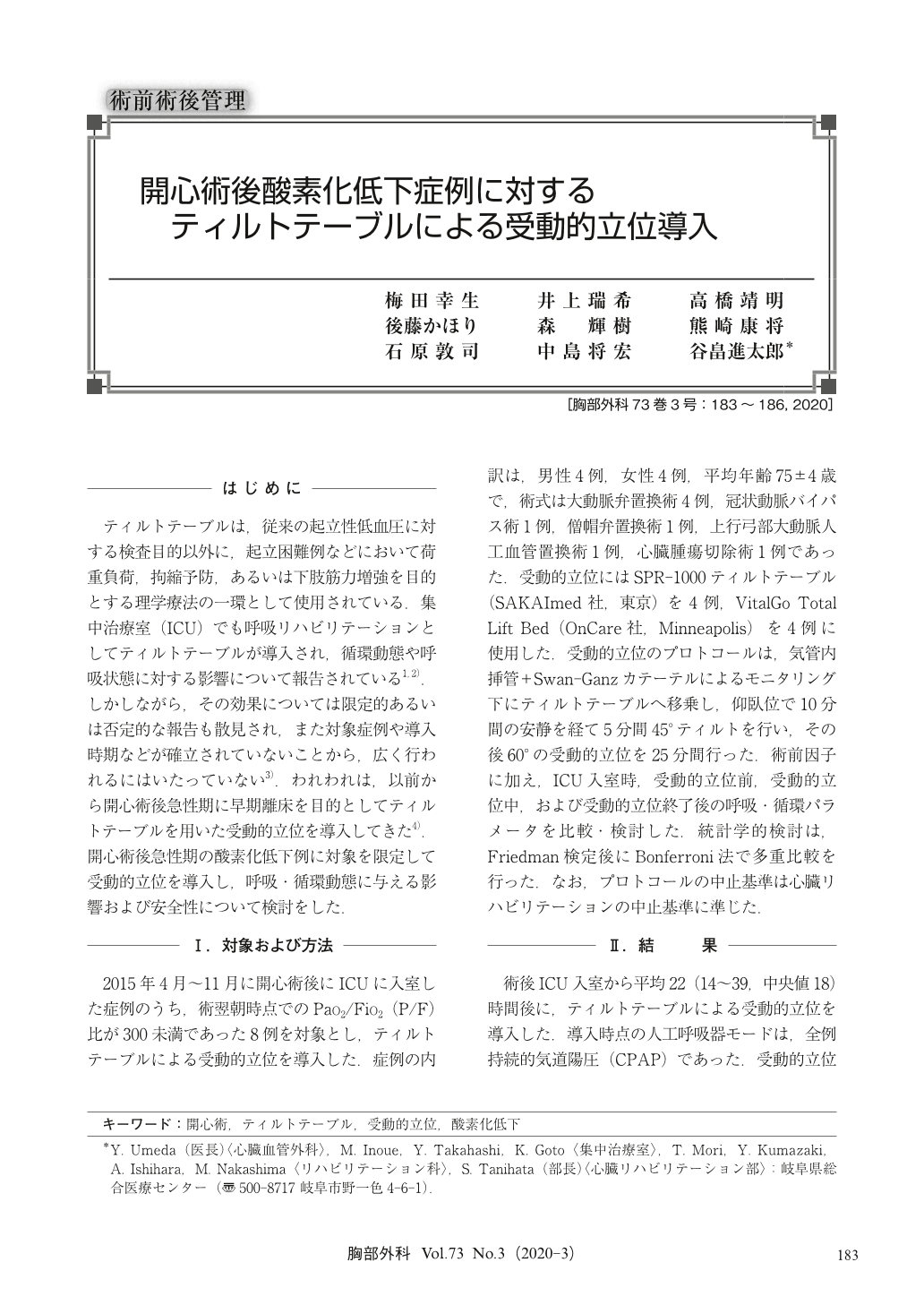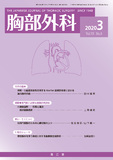Japanese
English
- 有料閲覧
- Abstract 文献概要
- 1ページ目 Look Inside
- 参考文献 Reference
- サイト内被引用 Cited by
ティルトテーブルは,従来の起立性低血圧に対する検査目的以外に,起立困難例などにおいて荷重負荷,拘縮予防,あるいは下肢筋力増強を目的とする理学療法の一環として使用されている.集中治療室(ICU)でも呼吸リハビリテーションとしてティルトテーブルが導入され,循環動態や呼吸状態に対する影響について報告されている1,2).しかしながら,その効果については限定的あるいは否定的な報告も散見され,また対象症例や導入時期などが確立されていないことから,広く行われるにはいたっていない3).われわれは,以前から開心術後急性期に早期離床を目的としてティルトテーブルを用いた受動的立位を導入してきた4).開心術後急性期の酸素化低下例に対象を限定して受動的立位を導入し,呼吸・循環動態に与える影響および安全性について検討をした.
Passive orthostatism using a tilt table was introduced in patients with impaired oxygenation [Pao2/Fio2 (P/F) ratio < 300] after cardiovascular surgery. Our passive orthostatism protocol was as follows. Patient was transferred to a tilt table under endotracheal intubation with pulmonary artery catheter monitoring, and rested for 10 minutes in a supine position, followed by 45-degree tilt for 5 minutes, and then passive orthostatism at 60-degree for 25 minutes. P/F ratio was significantly improved during passive orthostatism. Improvement in P/F ratio was confirmed even 1 hour after completion of the protocol. No obvious adverse events were found throughout the protocol. On average, 15 hours (2~72 hours, median 4 hours) after the introduction of passive orthostatism, weaning from respirator was achieved.

© Nankodo Co., Ltd., 2020


